Palm Sunday celebrates the beginning of the week in which Jesus made his final visit to Jerusalem.
Take a look at the map of Jerusalem and the Mount of Olives shown below, which I drew for my novel Son of Mary. I’ve added three arrows to mark important points along the path Jesus followed:
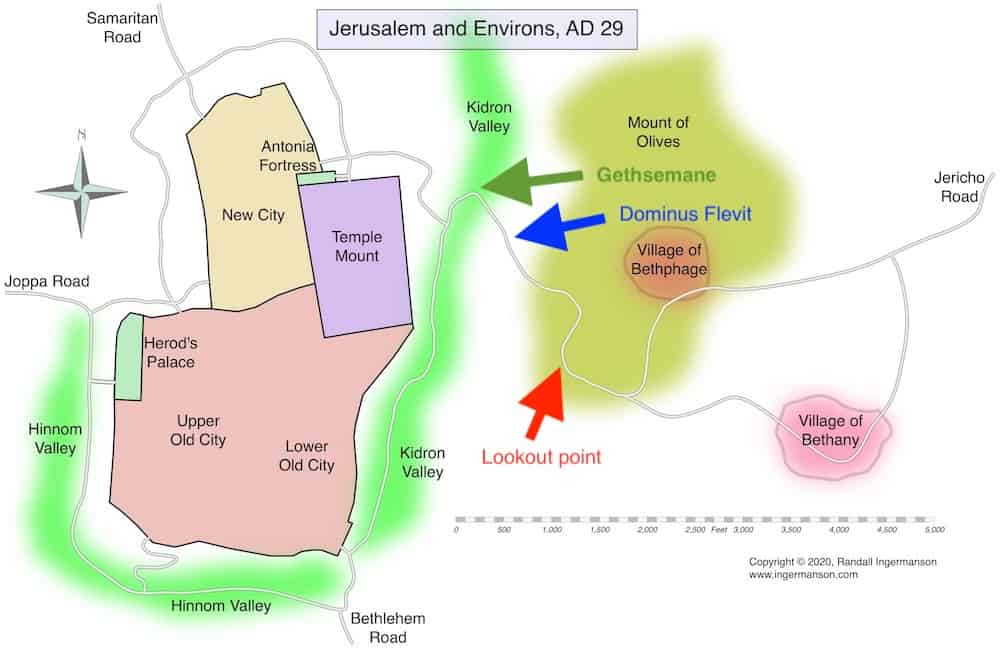
Jesus came up the Jericho Road from the east and passed by the villages of Bethphage and Bethany. I’ve added a red arrow at the location of a modern-day lookout point, just across from the modern 7 Arches Hotel. This is a very popular tourist site, and it’s common to see tourists there taking pictures or having a short camel ride. Most people get there by either bus or taxi, but if you’re in good shape, you can also walk from the Old City of Jerusalem.
The View From the Lookout Point
Below is a picture taken from the lookout point, looking northwest toward the Temple Mount. The picture gives you a sense of the size of the Temple Mount, which is about 500 yards from north to south, and about 300 yards from east to west. In the foreground, you can see a very large number of graves that blanket a wide swath of the western side of the Mount of Olives.
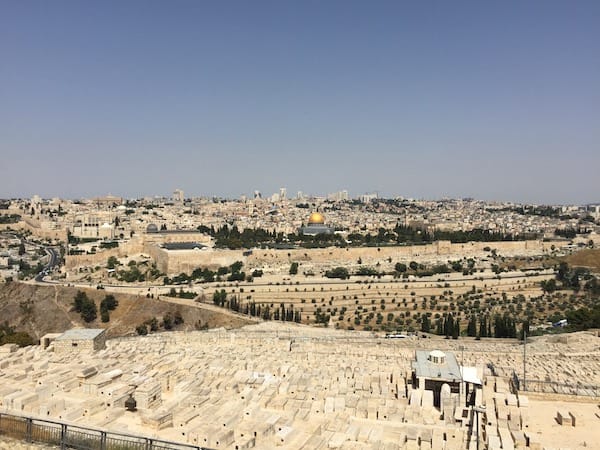
In case you’re wondering what it looked like in the time of Jesus, there’s a terrific model of ancient Jerusalem in the Israel Museum that gives a very good guess. Below is a picture of the model that I took from approximately the same position and angle as the picture above.
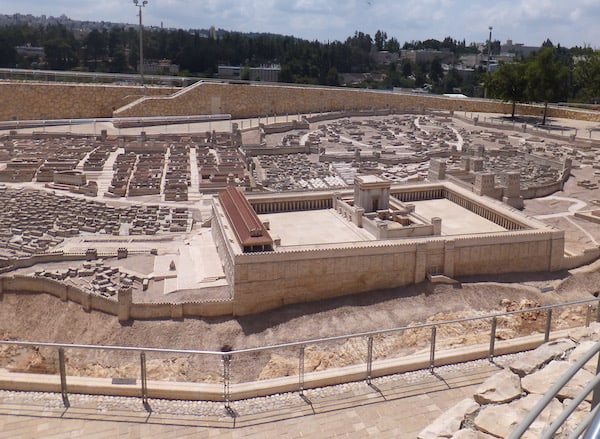
The Place Where Jesus Wept
From the lookout point, the road goes steeply downhill into the Kidron Valley. Jesus rode down this road on a donkey, surrounded by a large crowd of excited pilgrims. About halfway down, we read in Luke 19:41-44 that Jesus wept over the city. According to this passage, he foresaw the time when the city would be surrounded by a Roman army and destroyed.
The traditional location for this place of weeping is now called Dominus Flevit (Latin for “the Lord wept”). I’ve marked this location with the blue arrow on the map above.
The picture below shows the view of the Temple Mount from Dominus Flevit as it looks today. The golden-domed Muslim shrine, the Dome of the Rock, probably stands on the same site as the Temple did in the time of Jesus.
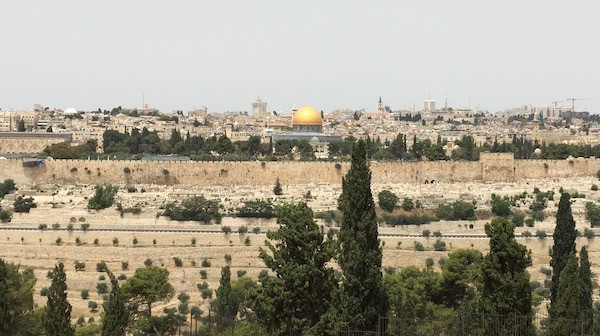
And what did Jesus see? The image below shows the model of first-century Jerusalem, taken from roughly the position where Dominus Flevit would be. This image is zoomed in a bit as compared to the picture above.
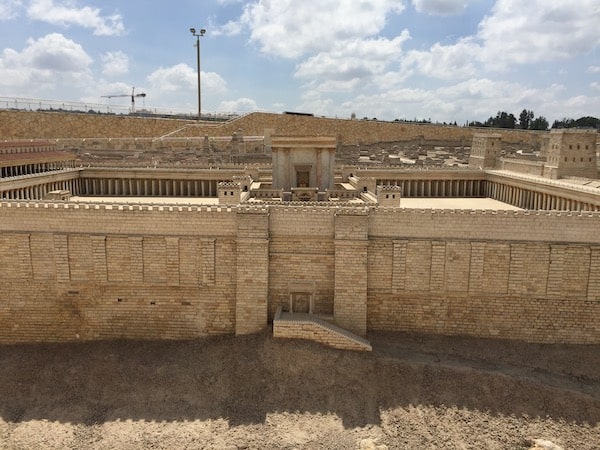
The Garden of Gethsemane
Jesus continued his descent until he reached the Kidron Valley. The point where the road bends on the map is widely believed to be very close to the Garden of Gethsemane, where Jesus would be arrested only a few days later. (The word Gethsemane comes from the Aramaic term “olive press.”) I’ve marked this point on the map above with a dark green arrow.
This area has a number of olive trees, and there’s a cave nearby that shows signs of having had an olive press. For more on that, see my blog post, The Gethsemane Cave.
As you can see on the map, Jesus then had a choice on which way to go. Going northwest would take him directly past the Antonia Fortress, manned by Roman soldiers who were there to prevent an insurrection.
Since Jesus was surrounded by a large crowd of angry people who were bent on insurrection, the way past the Antonia Fortress would very likely have led to an immediate massacre.
But we know there was no massacre, so probably Jesus went south along the Kidron Valley to the gate at the southeast corner of the city. For more on that, see my blog post, Jesus and Palm Sunday.
